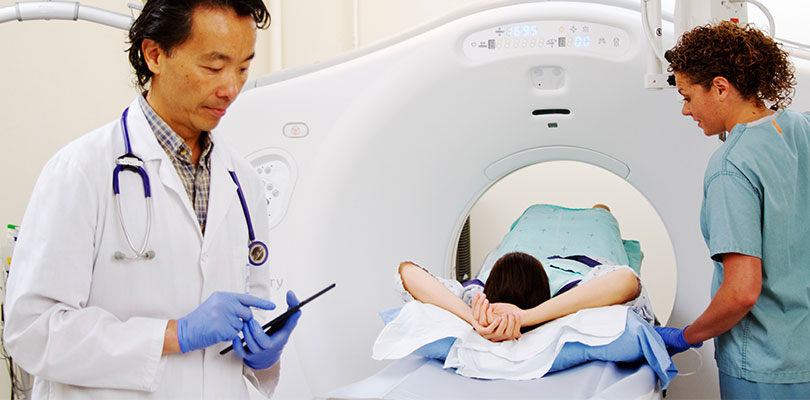Assessing the Risk
Eosinophilic esophagitis (EoE) is a chronic disease where white blood cells (eosinophils) accumulate in the esophagus. This can lead to inflammation, trouble swallowing, chest pain, food getting stuck in the esophagus and more. And, inevitably, this can be quite uncomfortable and disruptive to one’s daily life. At the same time, there are various strategies to manage this condition.
Yet, can EoE increase your risk of esophageal cancer? If you’ve been diagnosed with this condition, is this something you should be concerned about? In this article, we explore the potential relationship between EoE and esophageal cancer.
What Causes EoE?
Eosinophils, the type of white blood cells associated with EoE, are typically found in the digestive tract. Yet, this alone is not unusual.
This article will examine cancer and ITP to understand the connection and how you can better prepare yourself.
EoE occurs when an individual experiences an allergic reaction to food or environmental substances. This causes an increase in these white blood cells and inflammation (and, sometimes, narrowing) of the esophagus—the tube connecting your mouth to your stomach.
While EoE can commonly be controlled through steroids and dietary strategies, a major concern many people have is whether this inflammation can increase one’s risk of esophageal cancer. So, let’s take a closer look.
EoE & Esophageal Cancer: Is There a Connection?
Research indicates that there is no link between EoE and esophageal cancer. This includes having EoE over the long term; generally, EoE is a condition that must be managed ongoing throughout a person’s lifetime.
Considering esophageal cancer is among one of the most aggressive forms of cancer you can get, this is good news. Yet, while EoE itself might not necessarily lead to esophageal cancer and research doesn’t show a direct link, there are a few things to note.
For one, persistent inflammation in the esophagus, as seen in EoE, may potentially lead to changes in the esophageal lining over time. Chronic inflammation is generally considered a risk factor for various types of cancer. Recurring heartburn associated with EoE may also increase your risk of esophageal cancer.
However, again, it is important to note that the direct link between EoE and esophageal cancer is not well-established, and more research is needed to fully understand the potential long-term risks. Regular monitoring and management of EoE symptoms by a healthcare professional can help reduce the risk of complications and maintain esophageal health.
For example, you may be advised to avoid certain foods that cause allergic reactions. In some cases, losing weight may help alleviate some complications or flare-ups involved in this disease. Elevating your head while you sleep may also help prevent heartburn associated with EoE.
How to Reduce Your Esophageal Cancer Risk
Aside from proper EoE management, what else can you do to reduce your risk of esophageal cancer?
Here are a few tips:
- Quit smoking.
- Limit or avoid alcohol.
- Maintain a healthy body weight.
- Eat a diet rich in vegetables and fruit.
- Perform regular physical activity.
- Get proper treatment for acid reflux.
Preventing the Human Papillomavirus (HPV) is also a worthwhile strategy to prevent esophageal cancer. Certain types of HPV can increase your chances of developing cancerous cells, especially if HPV is contracted via oral sex. While using condoms and other protection can help, another way to prevent HPV is by getting the HPV vaccine.
If you’re diagnosed with a rare condition called achalasia, learning to manage it properly can also help lower your risk. Achalasia occurs when the muscles in the lower esophagus don’t function as they should, leading to reduced contractions and the slowing of food passing into the stomach. When food becomes stuck in the lower esophagus, it may be more likely to experience acid reflux which can damage the esophageal tissue and potentially increase your risk of cancer.
Getting an EoE Diagnosis
While the research shows no direct link between cancer and EoE, if you suspect you may have EoE, it can be valuable to get a proper diagnosis. This may help you find ways to manage it and potentially help you thwart esophageal cancer risks in the future.
So, what does getting a diagnosis involve? Currently, an EoE diagnosis is made through a biopsy. While imaging can help, in some cases of EoE, the esophagus may appear normal. Thus, tissue testing can provide more information.
From here, you and your doctor can determine the best treatment management strategies for your specific situation. EoE is not known to limit life expectancy. However, if not treated, the esophagus can narrow over time, leading to increased symptoms and issues. Thus, following your doctor's recommendations and advice is critical to ensure it doesn’t impact your quality of life or health.







